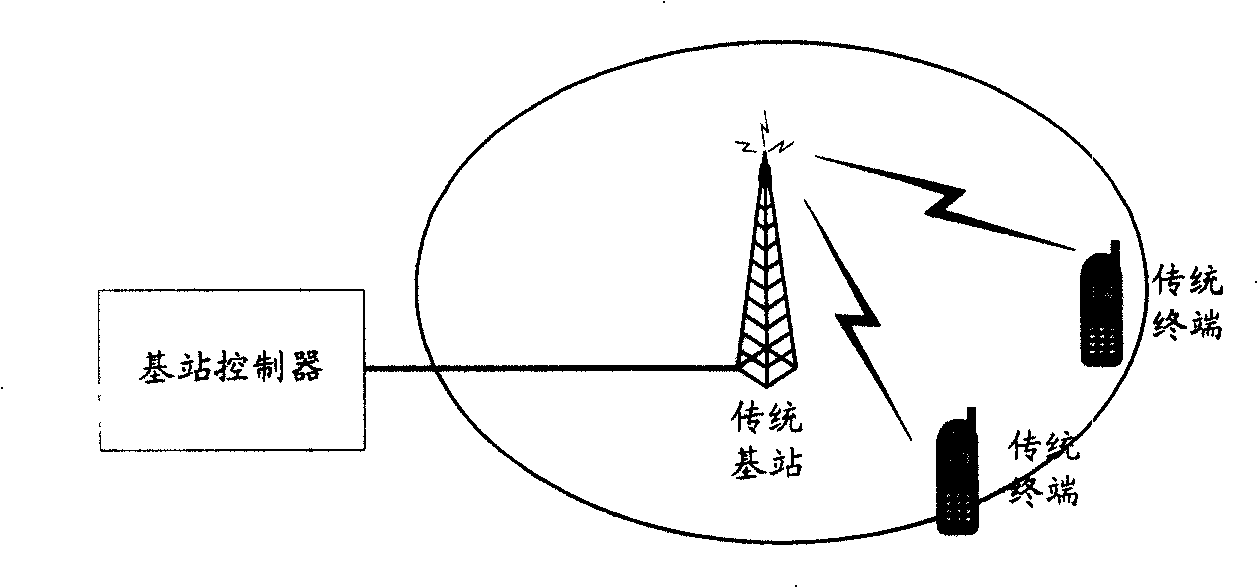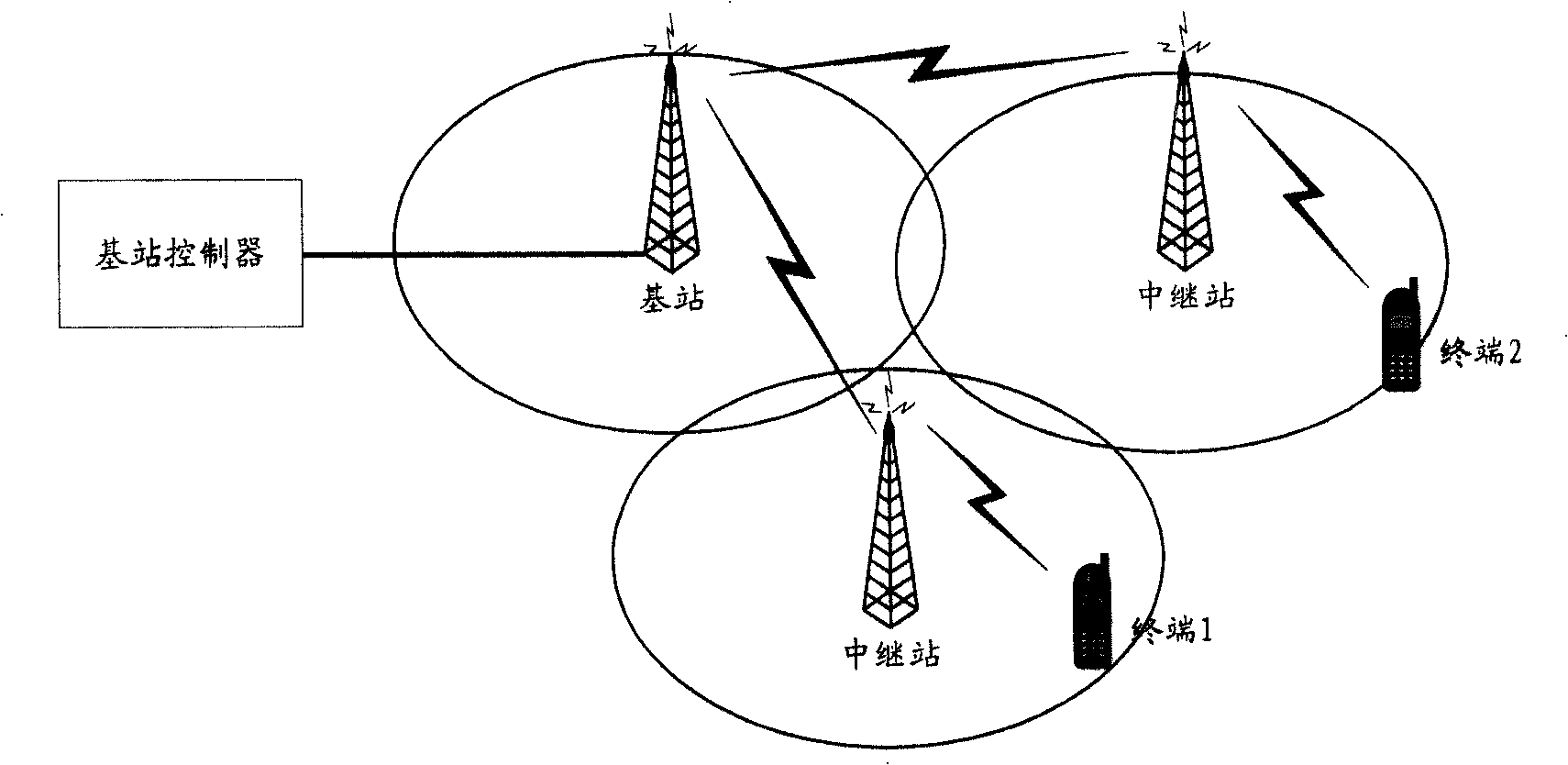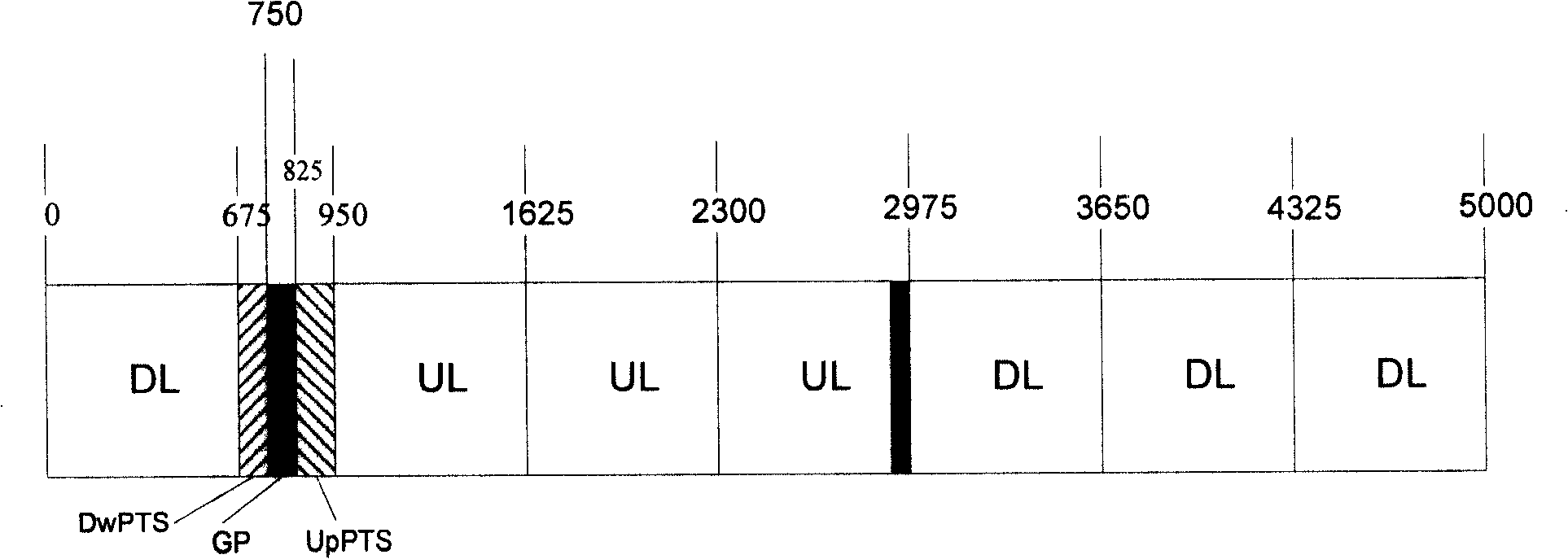A method and system for realizing common station address and coexistence of adjacent frequency
A technology of adjacent frequency and base station, which is applied in the field of coexistence of adjacent frequency co-sites, can solve problems such as high transmission power, uplink signal interference, and system spectrum efficiency reduction, and achieve good adjacent frequency co-site coexistence and reduce interference Effect
- Summary
- Abstract
- Description
- Claims
- Application Information
AI Technical Summary
Problems solved by technology
Method used
Image
Examples
Embodiment 1
[0069] In this embodiment, by comparing the frame structure of TD-SCDMA with the frame structure represented by the time slot in the 3G next-generation evolution system, the adjacent frequency co-location of the TD-SCDMA system and the 3G next-generation evolution system is realized coexist.
[0070] Figure 5a It is the first schematic diagram of the frame structure co-existing with TD-SCDMA adjacent frequency co-site in the embodiment of the present invention. As shown in the figure, the first row is the frame structure of TD-SCDMA, and the second row is the frame structure of the embodiment of the present invention. Figure 5a The first line shows the frame structure of TD-SCDMA with image 3 The frame structure of TD-SCDMA shown is the same. It can be seen that in each subframe, the ratio of DL to UL is 3:3 after removing the DL numbered 0.
[0071] As for the TD-SCDMA frame, the frame shown in the figure is composed of two subframes. In each subframe, include: four D...
Embodiment 2
[0080] Figure 5b It is a second schematic diagram of a frame structure co-existing with TD-SCDMA adjacent frequency co-sites according to an embodiment of the present invention.
[0081] and Figure 5a Compared with the shown frame structure, the difference is that in this embodiment the ratio of DL to UL in the first row is 4:2, and correspondingly the ratio of DL to UL in the second row is 5:2. Because in TD-SCDMA frame, TS 0 , that is, the DL provision numbered 0 cannot be counted in the DL, so the ratio of DL to UL in the first row is 4:2. In this embodiment, the method for obtaining the frame structure of the present invention from the frame structure of TD-SCDMA in the first row and Figure 5a The method is the same in the shown embodiment.
[0082] So far, the end of the Figure 5b Description of Example Two shown.
[0083] based on image 3 The frame structure of TD-SCDMA shown in the above-mentioned embodiment 1 and embodiment 2 introduces the frame structure ...
Embodiment 3
[0085] Figure 5c It is a third schematic diagram of a frame structure co-existing with TD-SCDMA adjacent frequency co-sites according to an embodiment of the present invention. see Figure 5c It can be seen that a radio frame i is 10ms, including subframe 1 and subframe 2, and both subframe 1 and subframe 2 are 5ms.
[0086] In subframe 1, each DL and UL is 665.625 μs, and DUSP and UDSP are 248.046875 μs and 9.375 μs, respectively. The length of the SCH that idles or performs synchronous operation before the DL numbered 0 is 83.203125 μs.
[0087] exist Figure 4 In , the time length of the downlink to uplink switching point is 75μs, but in this embodiment, the UDSP is extended to 248.046875μs, so the time interval of the downlink to uplink switching point is significantly extended, which can greatly reduce the impact of the downlink signal on the uplink Signal interference, so as to ensure that the TD-SCDMA system and the 3G next-generation evolution system can better co...
PUM
 Login to View More
Login to View More Abstract
Description
Claims
Application Information
 Login to View More
Login to View More - R&D
- Intellectual Property
- Life Sciences
- Materials
- Tech Scout
- Unparalleled Data Quality
- Higher Quality Content
- 60% Fewer Hallucinations
Browse by: Latest US Patents, China's latest patents, Technical Efficacy Thesaurus, Application Domain, Technology Topic, Popular Technical Reports.
© 2025 PatSnap. All rights reserved.Legal|Privacy policy|Modern Slavery Act Transparency Statement|Sitemap|About US| Contact US: help@patsnap.com



